How To Descale Your Espresso Machine
by Jeanette Kierstead
Descaling your espresso machine on a regular basis is one of the most important things you can do to keep it brewing espresso that tastes great, and not to mention that descaling also will extend the life of your espresso machine substantially if you stay on top of it.
| Rancilio Silvia Espresso Machine With Iron Frame And Stainless Steel Side Panels, 114 By 134-Inch |
|---|
| Breville The Barista Express Espresso Machine, Bes870Xl |
| Ceptics Schuko, Germany, France, Russia Travel Adapter Plug Type E/F (3 Pack) Usa To Europe – Dual Inputs |
Those are two great reasons to make sure the job gets done, at least 3 or 4 times a year. Not knowing how to descale an espresso machine is no longer a viable excuse for you not to do it.
Why? Because you’ve found your way here, and we’re about to tell you how to do it right now! 🙂
Here is what we are going to talk about today:
- Why it is important to descale your espresso machine?
- How often you should descale your espresso machine?
- How to descale your espresso machine by using citric acid?
- How to descale your espresso machine by using vinegar?
- Descaling a Heat Exchange Espresso Machine
- Descaling a Single Boiler or Thermoblock Espresso Machine
- Descaling A Super-Automatic Espresso Machine
- Recommended Descaling Products
Let’s start by explaining why it is so important you descale your espresso machine.
Why it is important do descale your espresso machine?

There is so many factors involved in making a delicious cup of espresso. You probably already know that grind size, dosage and water temperature all have a great effect on the taste of your espresso.
However, the one factor that can ruin even the best balance of these three elements is the build-up of scale in your espresso machine.
Here are some of the key reasons why it is so important to descale your espresso machine:
Water is not able to reach its optimal brewing temperature
It is well know that low brewing temperature produces low extraction yield. On the other hand, high brewing temperature produces high extraction yield.
To put it simple, the higher the water temperature, the higher percentage of ground coffee gets extracted into your cup.
Although the changes in extraction yield are small, brewing temperature does have an effect on taste.
Taste might be compromised

If your espresso machine produces varying brewing temperature it will be hard for you to make the same cup of espresso every time.
It is generally accepted that sweetness, body and bitterness of coffee are increased as the brewing temperature increases, while the acidity gets slightly reduced.
With lower brewing temperature, the opposite occurs. So, as the temperature of your water decreases due to built-up scale, your extraction becomes more acidic, resulting in less delicious espresso.
Your machine could break down
The scale in your espresso machine can build up so much that it causes obstructions in the flow of water inside your machine.
If scale is partially obstructing your machine’s pipes, the amount of water flowing to both the brew hand and steam had becomes limited. If this happens to your espresso machine, it won’t be able to heat milk effectively.
If scale build-up is so bad that the machine’s pipes are completely obstructed, the machine will not produce any steam or milk.
Scale build-up can also occur on the level probe within the boiler. If this happens the machine won’t be able to detect the level of water properly, which may lead to overfilling and overflowing of the boiler.
Here is how often you should descale it…
How often you should descale your espresso machine?

If you live in a hard-water area, we suggest you descaling your espresso machine very often as scale build up can cause serious issues with your machine. If you don’t descale your machine frequently, scale build up will become incredibly hard to remove.
Here is how often you should descale your espresso machine; depending on how often you use it and whether you live in a hard-water or soft-water area:
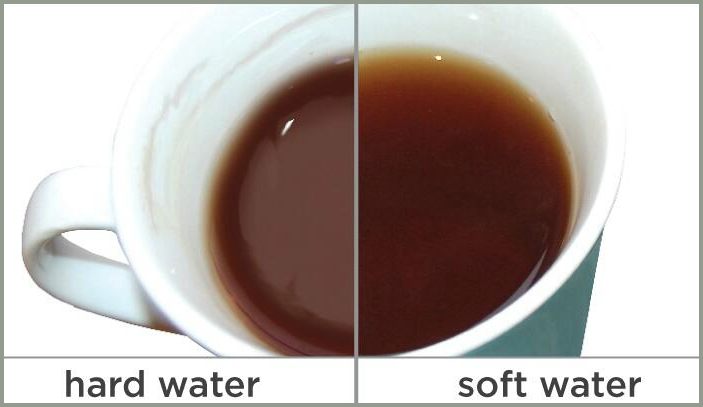
If you live in a hard water area and use your espresso machine up to 6 times per day, you should descale it monthly. If you live in a soft water area and use your machine up to 6 times per day, you should descale it every 3 or 4 months.
If you live in a hard water area and use your machine more than 6 times per day, you should descale it every 3 weeks. If you live in a soft water area use your machine more than 6 times per day, you should descale it every 2 months.
Here is how you can use citric acid to descale your espresso machine:
How to descale your espresso machine by using Citric acid?
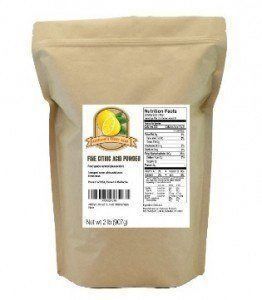
When it comes to using citric acid, as the video above shows, you’ll need one quart of water (or one liter if you’re from Canada), and then one or two tablespoons of citric acid to mix in. If your water is harder naturally, you’ll want more citric acid in your mixture (eg. two scoops).
Mix the water and the citric acid together well in some type of vessel. We suggest using about room temperature water for this task, although you don’t need to get too hung up on the water temperature. It can be slightly warm, or slightly cool. Nothing too extreme though.
Once you’ve mixed together your citric acid solution, feel free to have a taste – you will likely find it to be quite tangy! Since its all natural, no harm will come to you, although it might not be your new favorite beverage.
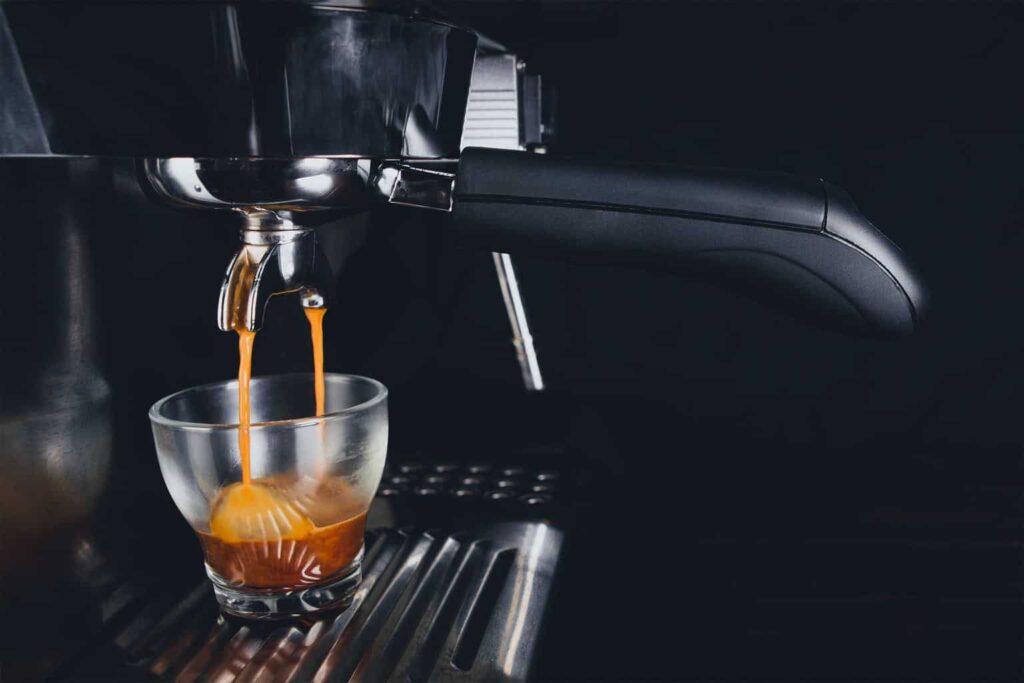
Now you just run the citric acid / water solution through your boiler and out through the group by filling up your water reservoir and running your espresso machine.
Don’t forget to also run water through your steam wand. You basically want to make sure the solution runs through all of the little pipes in your machine in order to descale everything. Continue running the boiler until you run out of solution.
Here is a video you can watch if you are not sure about the steps we explained above:
If you’re descaling a machine like the Rancilio Silvia, you needn’t worry about the citric acid damaging your boiler, since it has a brass boiler in that case, but you’ll want to be aware of any espresso machine that has an aluminum boiler, as the citric acid can then get stuck in there if not rinsed thoroughly.
How about vinegar…
How to descale your espresso machine by using vinegar?
As you can see in the above video, using vinegar is very similar to using a citric acid solution. Its a natural product, with the difference here being that you are using standard white vinegar directly, not a mixture or solution as with the citric acid.
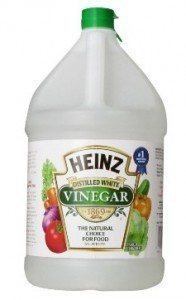
For the rest of the cleaning process, its essentially the same. Once again, make sure not to neglect the steam wand and there will likely be build-up there as well.
After you’ve run the vinegar through your machine, then its time again to give it a thorough cleaning with fresh water.
Run water through the machine until you feel that the vinegar has been totally rinsed out.
Again, you will probably encounter weird looking water. Anything that needs can be washed separately probably should be, in order to give your espresso machine the best cleaning possible.
Here is how to descale a HE (heat exchange) espresso machine:
Descaling a Heat Exchange Espresso Machine
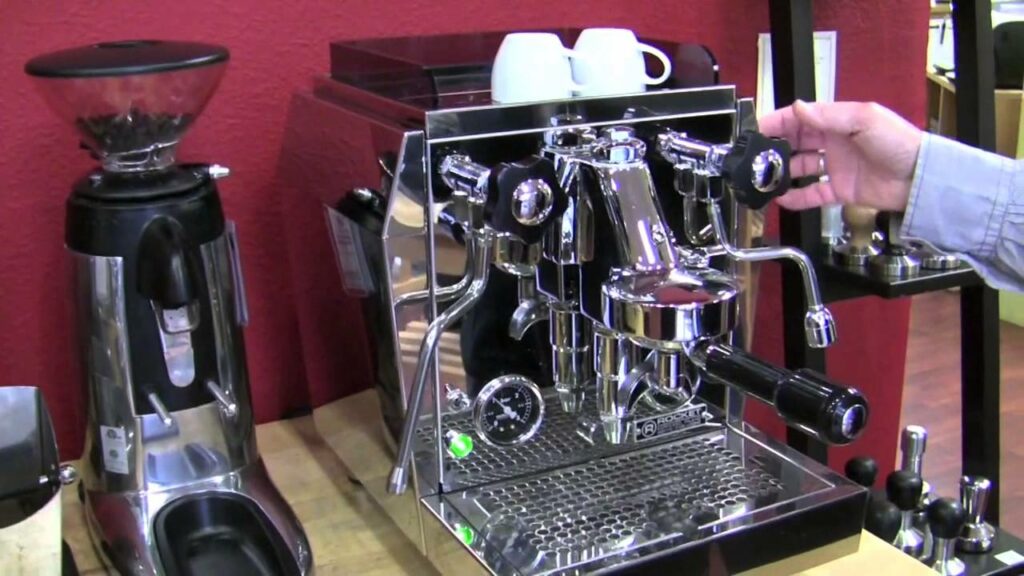
This step-by-step guide will help you easily descale your heat exchange espresso machine. It’s worth mentioning that this descaling process will work with almost any machine with a heat exchange boiler. Here are the steps you need to do:
- Turn your machine on and let it heat up to its operational pressure. Once the machine reaches its operational pressure turn it off. Then open the hot water valve.
- Next, discharge water from the heat exchanger by operating the brew lever. Once all the water is discharged, close the hot water valve.
- Prepare your descaling solution according to the instructions provided by the manufacturer. If you are using a powder-type solution, make sure to mix it until it dissolves completely.
- Pour the descaling solution into the machine’s water tank and switch the machine on. You will hear the pump turning on and filling the boiler with the solution.
- Place the portafilter with the blind filter into the brew group and lock them in place. Operate the brew group lever 3 times (20-30 seconds each time). Move the lever to the lowest position possible after each operation in order to descale the expansion valve.
- Let your descaling solution react in the boiler for around 20 minutes. After 20 minutes, operate the brew group lever to release the remaining descaling solution from the machine.
- Now, switch off the machine, remove the nozzle from the hot water dispenser and open hot water valve.
- Remove the water tank, give it a good cleaning and rinse it in warm water. Put the tank back and switch the machine on. Let the machine refill the boiler with fresh water.
- Once the refilling is completed, operate the brew group lever 3 times (20-30 seconds each time). Make sure you still have the blind filter in place. This will help you rinse the expansion valve.
- Next, remove the blind filter and operate the brew group lever once for 60 seconds. This will help you rinse the heat exchanger.
- Repeat the following step 3 to 5 times to fully rinse the boiler:
- Turn the machine off and operate the hot water valve in order to drain the boiler. Refill the water tank and turn the machine back on. Let the machine reach its operating pressure and then turn it off. Now, open the hot water valve and drain the machine.
- Repeat this process 3 to 5 times to fully rinse the boiler. When done, your machine is completely descaled.
Here is how to descale a single boiler or thermoblock espresso machine:
Descaling a Single Boiler or Thermoblock Espresso Machine
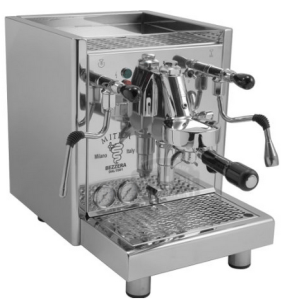
- Dissolve the descaling agent into a full water reservoir.
- Pull the solution into your boiler by running about a cup of water out of your steam and/or hot water wand. Close the steam knob.
- Turn off the machine and let sit for 20 minutes. This is important to allow the descaling solution to work.
- After 20 minutes, run about 1/4 of the reservoir out of the steam wand, 1/4 out of the brew head.
- Turn off the machine and allow to rest for another 20 minutes.
- Flush the remaining water out of the steam wand and brew head, and finish by running a reservoir (or two) of clean water through the machine.
Now, on to a super automatic espresso machine:
Descaling A Super-Automatic Espresso Machine
If your machine has an automatic descaling cycle, refer to the owner’s manual for instructions. For machines without an automatic descaling cycle:
- Dissolve the descaling agent into a full reservoir.
- Pull the solution into your boiler by running about a cup of water out of your steam wand. Close the steam knob.
- Turn off the machine and let sit for 20 minutes. This is important to allow the descaling solution to work.
- After 20 minutes, run about 1/2 of the reservoir out of the steam wand.
- Turn off the machine and allow to rest for another 20 minutes.
- Flush the remaining water out of the steam wand and finish by running a reservoir of clean water through the machine.
Next, we bring you some of the best descaling products…
Recommended Descaling Products
Dezcal – used for single boiler, heat exchange and double boiler espresso machines; also good for manual, semi-automatic or super automatic espresso machines. Citric acid-based, natural descaler.
Durgol Swiss Espresso Special Decalcifier – a popular liquid descaler and that works with all types of home espresso machines.
Urnex Cleancaf – A blend of descaler and detergent; well suited for descaling a coffee maker and cleaning the brew basket, decanter; and a home espresso machine.
Jura Decal – a tablet form specifically for the Jura Impressa super automatic coffee centers; you have to use this for your Jura otherwise no warranty.
Delonghi – A liquid descaler and another must for the DeLonghi machines.
Saeco – This is a liquid descaler which is formulated for use in Saeco espresso machines but could be used on other brands.
We sincerely hope this article helped get your espresso machine back to top form! Thanks for reading!
 |
 |
 |
 |

About Jeanette Kierstead
Jeanette has been testing and reviewing kitchen appliances for over six years now, so she knows her stuff when it comes to finding the best ones. In her spare time, she loves nothing more than baking cakes and cookies – especially if she can do so with one of her favorite stand mixers! When she's not in the kitchen, Jeanette is usually looking after everything homes-related; from garden tools to smart home products.
Thoughts on "How To Descale Your Espresso Machine"
 |
 |
 |
 |
Get FREE Coffee Gifts now. Or latest free grinders from our best collections.
Disable Ad block to get all the secrets. Once done, hit any button below
 |
 |
 |
 |


